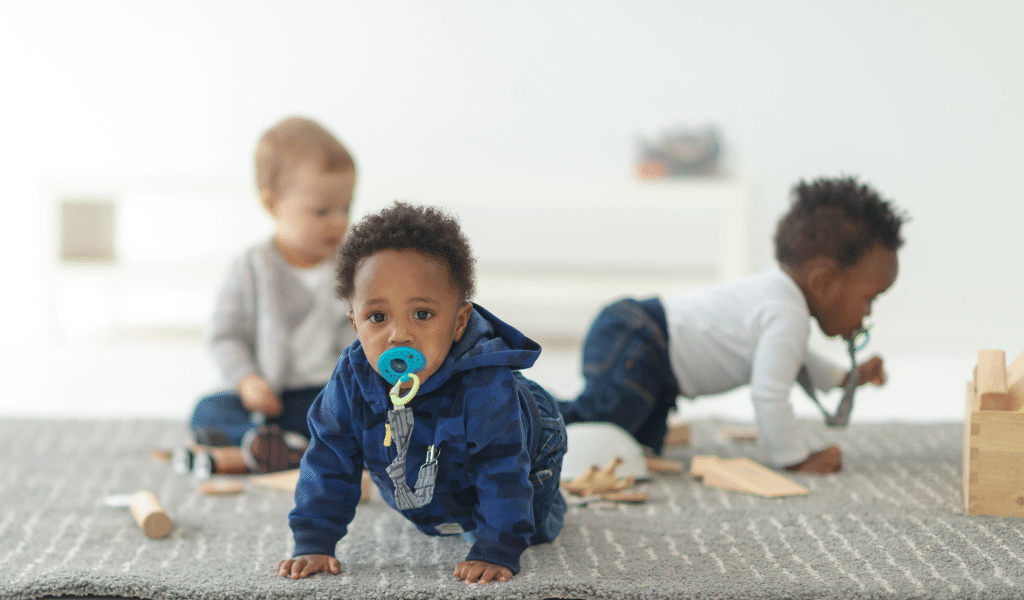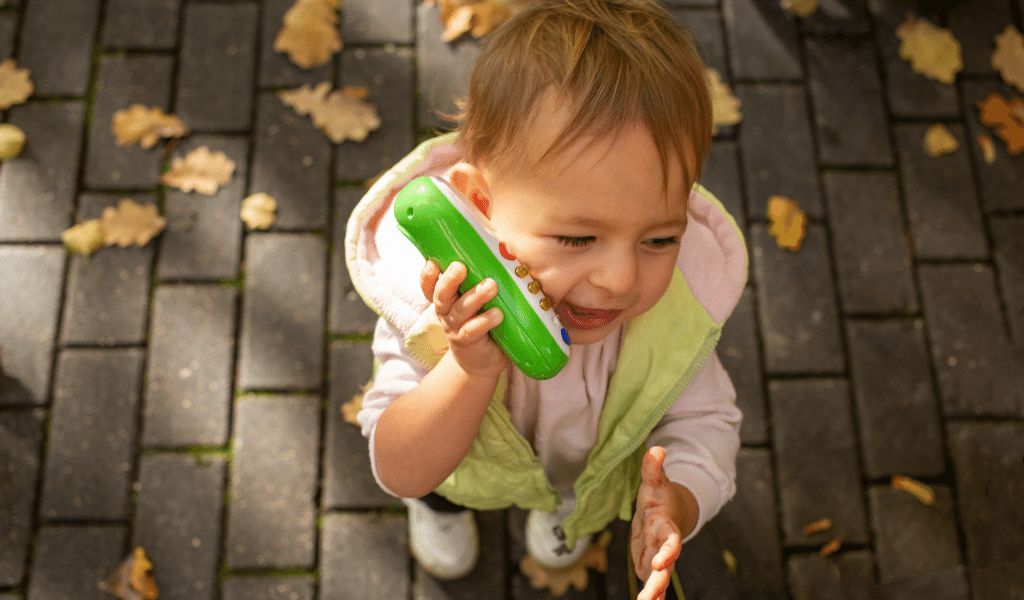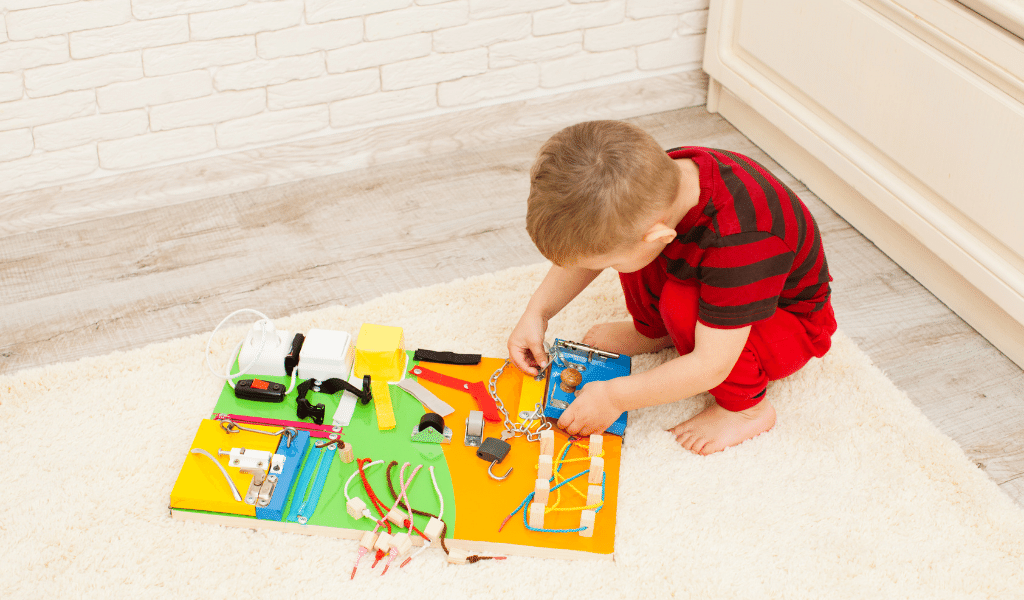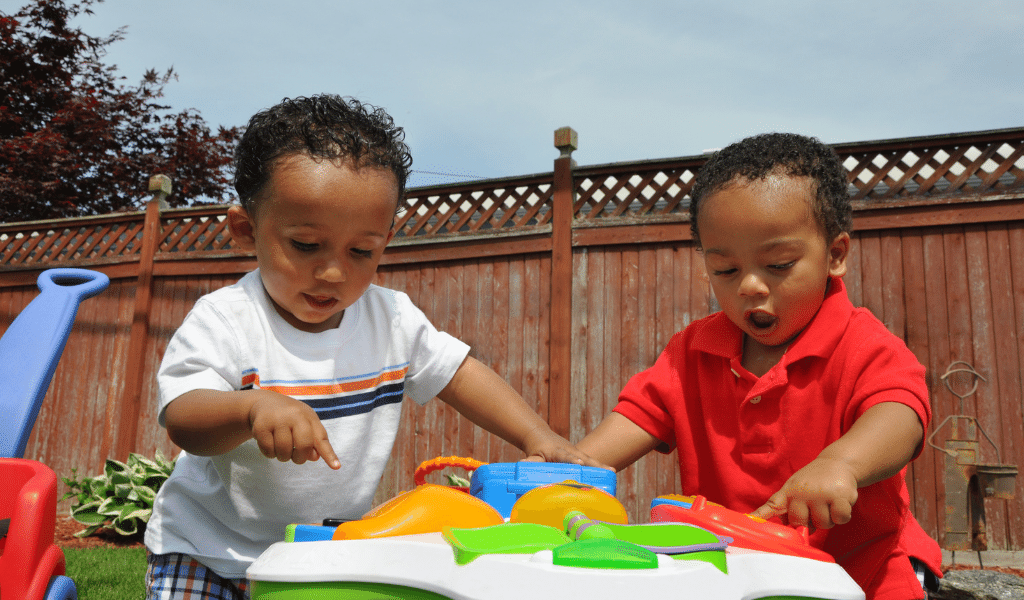Play is vital for young children and a key way that they learn
Some theorists talk about different forms of play, as children move from playing in a solitary way to playing more collaboratively, and others have organised play into different types. This can be helpful when observing very young children’s play and thinking about their age and stage of development. In this blog, SENCo and early years consultant Tamsin Grimmer reflects on five types of play that she’s observed very young children engaging in…
Simply put, moving children are learning children! Movement helps to strengthen learning in the brain and best of all is great fun, for example, we can create obstacle courses, move in different ways like animals and dance together. Movement play can take place indoors and outdoors – anywhere that we can find a space! I find that movement play links really brilliantly with music, action songs, rhymes and stories.

Pretend play comes very naturally to most children and there are loads of benefits to playing pretend games and encouraging them to creatively use their imagination. For example, taking on different roles helps children to adopt different perspectives which is part of learning theory of mind. This is partly about realising that other people have different thoughts and feelings to me. Pretending can help with social interaction and understanding rules and social etiquette as well as being a great opportunity to practise communication skills. When a wooden block can become a phone and a piece of fabric a superhero cape, we don’t need any specific resources either – we can just offer open-ended materials and allow the children’s imaginations to take over!

When we experience things with our senses, we are strengthening the connections in our brain. We need to provide lots of opportunities for children to explore using all of their senses. It is especially important for our youngest children as they make excellent use of their senses to play and learn. Planning and resourcing for this enabling environment is vital. We tend to think about our five senses when we think about sensory play:

However, we do have other senses that we must also consider when thinking about sensory provision. For example, our vestibular sense, which is all about spatial orientation, movement and balance and our proprioceptive sense, which is the perception of where our bodies are in relation to the space around us. You can reflect upon the sensory provision you offer and consider if it is also offering opportunities to develop in these areas. For example, can you encourage movement by offering access to loose parts that can be moved around? Can you offer children the opportunity to walk barefoot over different surfaces?
Messy play is extremely important for a child’s development. It gives children really exciting hands-on and sensory experiences and offers them the opportunity to develop their physical motor skills too. Messy play also taps into children’s curiosity and can enhance their creativity as they explore through touch, experimentation and discovery. You can introduce new textures to children through messy play and they can develop and refine skills such as hand-eye coordination, and their fine and gross motor skills. Messy play can also strengthen muscles and help children with their vestibular sense and proprioception.

Have you ever noticed a babysit and watch the washing machine as if it were the latest release from Netflix? Or a toddler collect and line up all the shoes in the house? Play and repetitive play, in particular, are common occurrences in early childhood. But why do children behave in these puzzling ways?
Children, all of us in fact, learn through repetition. Repeated actions, words and thoughts help us to build up a mental picture of the world around us and it is these mental representations and repetitive actions that are often referred to as schemas. Repetition strengthens the synapses in our brains so engaging in schematic play is helping to build young children’s brains… literally!

We can also reinterpret behaviour in the light of schemas because schemas can provide an alternative lens with which to view children and in doing so, redirect them into more worthwhile endeavours. So using schemas to reinterpret children’s challenging behaviour gives us, as practitioners, another tool for our toolbox.
In my book, Observing and Developing Schematic Behaviour in Young Children, I unpick the most common schemas and provide ideas of how to extend children’s learning based on their schematic interests. I also consider children whose behaviour may be misinterpreted as challenging when it could simply be schematic.
Want to learn more about these five types of play including schemas? Re-watch Tamsin’s Kinderly webinar and catch up with our previous recordings when it suits you best.

Tamsin Grimmer is Director of Linden Early Years. She is an experienced Early Years Consultant and author who has a keen interest in how young children learn and develop. When not writing or researching, Tamsin works part-time on the Primary and Early Years PGCE courses at Bath Spa University. Her previous roles have included Early Years Consultant for two local authorities, Area SENCo, teacher, Mentor for EYP and EYT and outstanding childminder.